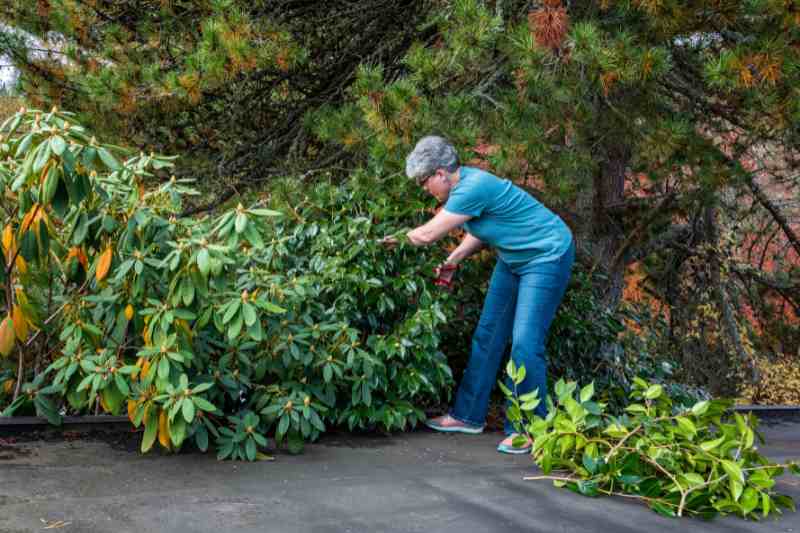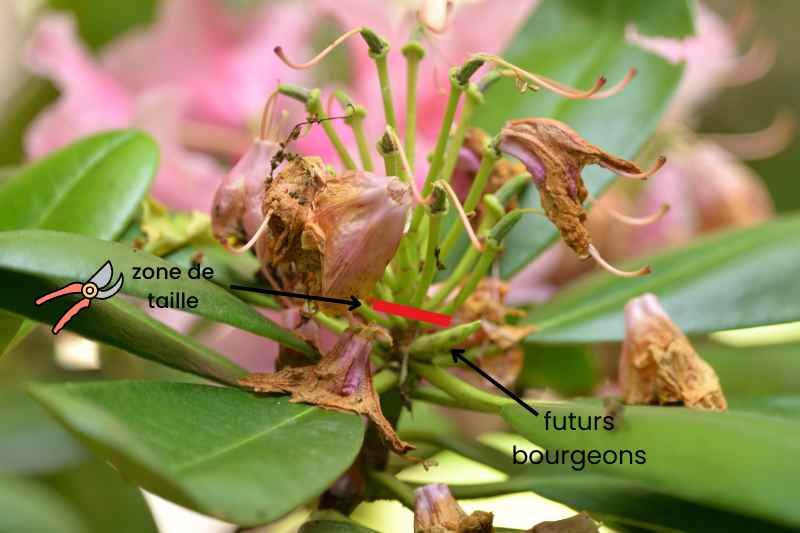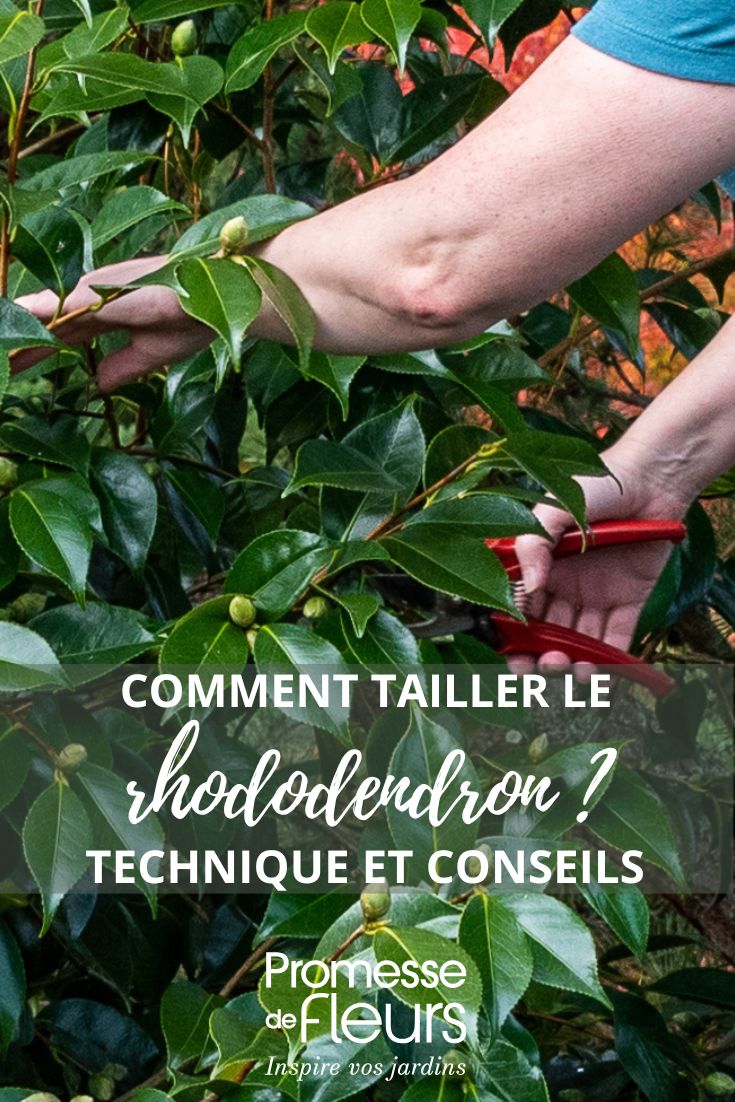Rhododendrons, like azaleas, are low-maintenance bushes, which is particularly appreciated about them, aside from their spectacular spring flowering of course! While these bushes don't particularly like pruning, it can still be done on some older specimens, but also, and most importantly, at the level of their inflorescences.
This tutorial explains when and how to prune a rhododendron to encourage its growth and flowering.
What should you prune on a rhododendron?
We need to distinguish two types of pruning when discussing this technique for rhododendrons: pruning the branches and pruning or rather cleaning up the inflorescences after flowering.
- Pruning dead wood on older rhododendrons or on specimens with overcrowded or diseased branches helps to balance their shape.
- Pruning faded inflorescences prevents unnecessary exhaustion of the bush which would otherwise produce seeds, and properly encourages the growth of new flowers that will also densify the bush.
N.B.: if a rhododendron has become too large for its space, it's preferable to transplant it elsewhere rather than prune it, as these bushes grow slowly and we love their majestic presence after several years of patience!

When to prune a rhododendron?
- For flower pruning, intervene when they have faded, in late May or June-July for later varieties, as the underlying buds become larger as the weeks go by.
- For branch pruning, on older rhododendrons or specimens with poorly positioned branches, proceed around May or June, just after flowering.

How to prune a rhododendron?
Pruning inflorescences
The future buds are located right next to the floral spikes. Wait until they appear (they have a characteristic pointed shape) to spare them when pruning faded flowers.
Gently take the entire completely faded flower spike in hand, twisting it to one side, just above the buds to avoid damaging them. Use harvesting scissors or fine secateurs if you're afraid of injuring the buds, cutting right next to the four to five already formed and clearly visible buds.

Pruning branches
The pruning operation is kept to a minimum for branches and the overall structure. Only prune dead wood, which may have formed over the years, as well as troublesome branches obstructing a pathway for example. This is just a very light refresh of young branches, without cutting old wood which would struggle to regrow, to maintain a balanced and airy habit.
You can also, if you wish to maintain a very round shape, cut juvenile shoots at the top, always taking care to identify buds and pruning with secateurs just above them.
My advice: with rhododendrons, carefully choose a species and variety by always assessing its mature size. As mentioned earlier, rhododendrons grow slowly and it's interesting to preserve their habit and sublime appearance by not pruning them.
































Comments